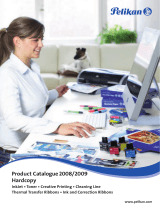1-4 Introduction Chapter 1
Using Your Documentation
Your machine includes the following four manuals:
• FAXPHONE L75 User’s Guide (this guide): Refer to this guide (included in the CD-
ROM) for instructions on setting up your machine, setting your machine to send and
receive, and making copies. There is also information on selecting and loading print
media and documents, instructions on machine maintenance, and a troubleshooting
section to refer to if you have difficulties operating your machine.
• Printer Driver Software User’s Guide: Refer to this guide (included in the CD-ROM)
for instructions on printing from your PC. Here you will find detailed instructions on
installing the printer driver software and operating it, and other relevant information for
using your machine as a printer. Refer to the troubleshooting section if you have
trouble printing.
• Set-Up Sheet:This sheet provides a quick reference on how to set up the machine,
connect it to your PC, and install the included software.
• Basic Guide: After following the instructions in the Set-Up Sheet, we recommend you
read this guide to familiarize yourself with the basic operation of all functions of your
machine.
How to Use This Guide
To make the best use of this guide, be sure to do the following:
• Read this chapter to learn about your machine’s main features, and for guidelines on
using the machine safely.
• Carefully follow the instructions in Chapter 2, Setting Up, to get your machine
unpacked, assembled, and ready for use.
• Read Chapter 3, Registering Information, to learn how to enter information in the
machine, and how to register the required sender information.
• Refer to Chapter 4, Document Handling, for details on the document requirements for
your machine and how to load them.
• Refer to Chapter 5, Print Media Handling, for details on paper and other print media
you can load on your machine, guidelines for selecting them, and other information
relating to print media and printing.
• Read Chapter 6, Speed Dialing, to learn how to register numbers for speed dialing
and how to use speed dialing to send documents.
• Read Chapters 7 through 10 to master the machine’s operating procedures, such as
sending and receiving faxes, special dialing, and making copies.
• Refer to Chapter 11, Reports and Lists, to learn about the reports and lists that can
be automatically or manually printed from your machine.
• Look over Chapter 12, Maintenance, to become familiar with procedures for cleaning
the machine and replacing the cartridge.





















